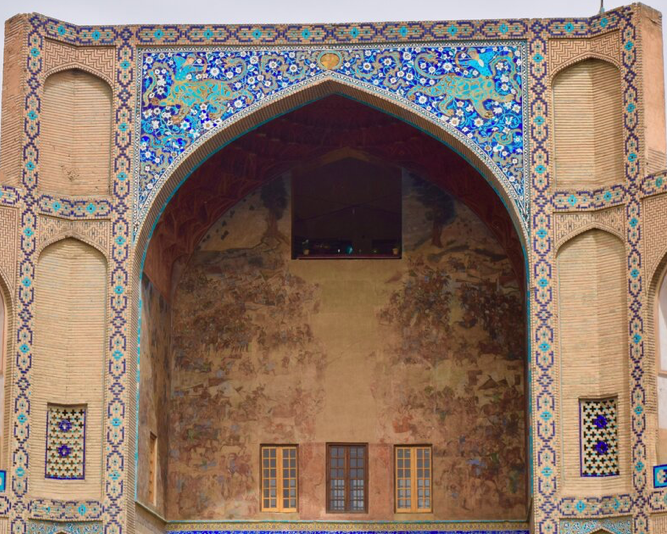
Thread: In which I would like to talk about animal calendar markers depicted on this Bronze mirror found in the Volga River region, Russia, and dated to the 8th-7th century BC. Published: Sotheby's, New York, sale cat. December 8, 2ooo. 

The mirror is decorated in relief with: wild ibex goat, (wild) horse, (wild) bovine, and wild Bactrian camel.
The fact that wild Bactrian camel is depicted on the mirror, tells us that this object was made somewhere in Central Asia, where we used to find wild Bactrian camels.
The fact that wild Bactrian camel is depicted on the mirror, tells us that this object was made somewhere in Central Asia, where we used to find wild Bactrian camels.
Look at the arrangement of the animals around the rim:
We have
horse paired (depicted across from) bull
ibex goat paired (depicted across from) bactrian camel
I don't think this pairing is a coincidence. It indicates that these animals are used as animal calendar markers...
We have
horse paired (depicted across from) bull
ibex goat paired (depicted across from) bactrian camel
I don't think this pairing is a coincidence. It indicates that these animals are used as animal calendar markers...
In Bactria, the climatic year is divided into hot/dry half (Apr/May - Oct/Nov) and cool/wet half (Oct/Nov - Apr/May). Animal calendar marker marks the mating or birthing season of the depicted animal. So let's have a look at the mating and birthing seasons of the depicted animals 





The mating season of Ibex goats begins in Oct/Nov, which is why ibex goat were used as animal calendar markers for the beginning of cool/wet half of the year (Oct/Nov-Apr/May)...I talked about this in my post about this figurine oldeuropeanculture.blogspot.com/2021/10/goat-c… 

The mating season of Bactrian camel begins in Oct/Nov, which is why Bactrian camels were used as animal calendar markers for the beginning of cool/wet half of the year (Oct/Nov-Apr/May)...I talked about this in my post about this plaque oldeuropeanculture.blogspot.com/2021/01/bactri… 

There are even Bactrian seals where we see Bactrian camel depicted with Ibex horns...Just so we know they are used as animal calendar markers... 

The mating of wild horses begins in Apr/May...Which is why horse was used as animal calendar marker for the beginning of hot/dry half of the year (Apr/May-Oct/Nov). I talked about this in my post about unicorns oldeuropeanculture.blogspot.com/2020/09/unicor… 

The calving season of wild cattle begins in Apr/May...Which is why cattle were used as animal calendar markers for the beginning of hot/dry half of the year (Apr/May-Oct/Nov). I talked about this in my post about grain harvest oldeuropeanculture.blogspot.com/2021/10/how-gr… 

So I don't think that the arrangement of the animals on the Volga mirror is a coincidence...It is possible, but unlikely...
Here is another example of animal calendar markers being grouped by seasons
Here is another example of animal calendar markers being grouped by seasons
https://twitter.com/serbiaireland/status/1406722643638824960
Anyway, more info about beautiful mirror can be found under the number 167 in this amazing book entitled "Nomadic Art of the Eastern Eurasian Steppes The Eugene V. Thaw and Other New York Collections"
dokumen.tips/documents/noma…
dokumen.tips/documents/noma…
More about animal calendar markers found in ancient cultures, start here oldeuropeanculture.blogspot.com/p/animal-solar… then check the rest of the blog posts I still didn't add to this page, and finally check my twitter threads I still didn't convert to blog post...I am 7 months behind now 🙂🙁
• • •
Missing some Tweet in this thread? You can try to
force a refresh














